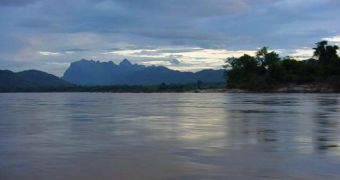As authorities are gearing up to start construction of no less than 11 major dams on the Mekong River, the WWF is arguing that the total amount of energy these structures would produce can also be obtained by constructing them on the river's tributaries, rather than its main course.
In a new report, the environmentalist organization shows that constructing large dams on this river would decrease its connectivity by a tremendous margin, and cause widespread damage in this habitat.
In addition to carrying water to seas or oceans, rivers are also the home of numerous species, which depend on being able to swim freely up and down the stream in order to survive. The waters also carry sediments and nutrients downstream.
Constructing a dam is tremendously damaging for the ecosystems that developed around the exploited rivers. The situation would be especially bad for the Mekong River, which is currently scheduled to have 11 such dams constructed on its course.
By building these structures on tributaries of the Mekong, authorities could avoid damaging river functionality, while at the same time obtaining the amount of electrical energy they were targeting.
At this point, dam development in the area is both uncontrolled and poorly evaluated, and this is why a delay is in order, while experts reassess the situation. According to the WWF, the river is now at a point where false moves could move its ecosystems over the tipping point.
“No part of the Mekong River still provides connectivity to all the 13 ecosystem types classified by a recent WWF study,” explains WWF Conservation Science Program expert Nikolai Sindorf.
“The impact of continuing incremental dam development will disconnect more-and-more ecosystem processes,” he adds. Impacts on ecosystem connectivity should be one of the primary factors against which the feasibility of constructing a dam is assessed.
“Where it gets alarming is the disproportional amount of negative impact from dam construction on the lower mainstream of the river such as Xayaburi, a dam proposed in northern Laos,” Sindorf adds.
“The Mekong is extremely sensitive to the impacts of mainstream dams because of its layout - a very long mainstream fed by relatively short tributaries.” the expert goes on to say.
He explains that some of the river's tributaries can easily supply the amount of electricity needed by the area for the time being. WWF is calling for the dam projects to be delayed by at least 10 years, as new feasibility and sustainability studies are being conducted.
“This will make it easier to develop the Mekong basin with a much lower environmental footprint. Ultimately, this would lead us to a situation where local energy demands are met, and relevant ecosystem processes are conserved basin-wide,” says Dang Thuy Trang.
The expert, who is based at the WWF Greater Mekong Program, is the manager of the Sustainable Hydropower and River Basin Program.

 14 DAY TRIAL //
14 DAY TRIAL //